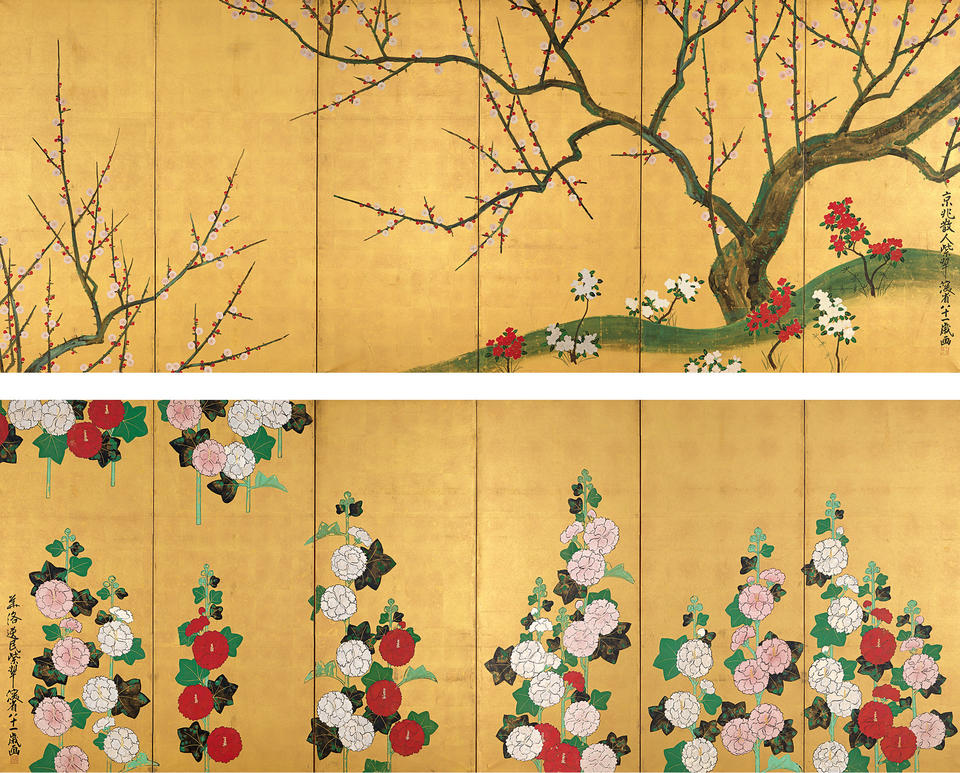Artist
Ogata Kenzan
(尾形乾山; 1663–1743)
Catalogue information
Edo period
Pair of six-panel folding screens; ink and color on gilded paper
Each screen 110.8 x 286 cm (43 5/8 in. x 9 ft. 4 5/8 in.)
Donated to the Minneapolis Institute of Art by the Mary and Jackson Burke Foundation in 2015
Ex Coll.: Prince Komatsu
Literature
Lee 1961, pls. 82, 83
; Tokugawa Art Museum 1966, unnumbered
; 1966
Rimpa meihin ten (Exhibition of the art of the Kōrin School). Exh. cat. Nagoya: Tokugawa Art Museum.
Nakamura Tanio 1967a, pp. 89–90
; 1967a
“Kenzan hitsu kōbai, tachiaoi zu byōbu” (Kenzan’s screens of red plum and hollyhocks). Kobijutsu, no. 16 (January 1967): 89–90.
Stern 1971, no. 30
; 1971
Rimpa: Masterworks of the Japanese Decorative School. Exh. cat. New York: Japan Society.
Murase 1975, no. 56
; 1975
Japanese Art: Selections from the Mary and Jackson Burke Collection. Exh. cat. New York: The Metropolitan Museum of Art.
Carpenter 2012, no. 61.
2012
Designing Nature: The Rinpa Aesthetic in Japanese Art. Exh. cat. New York: The Metropolitan Museum of Art.
See also
- Japanese paintings » Rinpa
- Screens
- Works of the Edo period
- Works by Ogata Kenzan
- Kenzan iboku (乾山遺墨 / Collected Works of Ogata Kenzan) is a printed record of the pair of screens illustrated in this work
This artwork was published as catalogue entry 184 in Volume I of Art through a Lifetime.
Additional details


Signatures
[on right screen] Painted by the Recluse from the capital Kyoto Shisui Shinsei at age 81
[on left screen] Painted by the Eremite from the Flowering Capital Shisui Shinsei at age 81
Seals
[on each screen] Reikai



